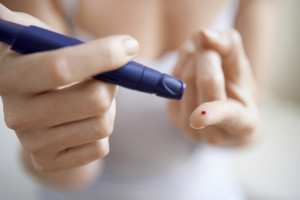The Artificial Pancreas for Type 1 Diabetes
 The artificial pancreas may present a real opportunity for medical researchers to cure type 1 diabetes. The results from a diabetes clinical study in Israel showed that the artificial pancreas was able to maintain better blood sugar levels than an insulin pump and a continuous glucose monitor. It was also able to prevent potentially life threatening drops in blood sugar levels that can occur overnight.
The artificial pancreas may present a real opportunity for medical researchers to cure type 1 diabetes. The results from a diabetes clinical study in Israel showed that the artificial pancreas was able to maintain better blood sugar levels than an insulin pump and a continuous glucose monitor. It was also able to prevent potentially life threatening drops in blood sugar levels that can occur overnight.
Type 1 diabetes is actually an autoimmune disease which occurs when if the immune system has begun to attack the insulin producing cells in the pancreas. If the pancreas’s beta cells are destroyed in these attacks, then the body effectively loses its ability to produce any insulin. Without this hormone, the human body is not able to metabolize the carbohydrates that are taken from food.
The Issue with Insulin Shots and Pumps
How do you replace this insulin? Currently, it can be delivered via an insulin pump or an insulin shot, but the pump uses a catheter that must be switched out every few days. The biggest issue with these methods is that type 1 diabetics must keep careful track of the foods they eat and the actions they take, so that they can make an accurate estimate of how much insulin they need.
Medical researchers believe that these issues could be solved with an artificial pancreas, since it can make full use of sophisticated computer algorithms in order to keep track of how much insulin that a patient needs at any given time. Thus, type 1 diabetics would no longer have to constantly worry about their insulin levels.
How do You Make an Artificial Pancreas?
As you may guess, creating such a device has not been simple. Too be effective, an artificial pancreas must be able to the patient’s blood sugar levels at all times, and then be able to determine whether these levels are moving up or down. Next, the artificial pancreas needs to be able to hold and deliver the insulin. At the moment, the devices that are being tested make use of the insulin pumps and continuous glucose monitors that are already available.

What would a fully realized artificial pancreas look like?
The artificial pancreas also has to house its own algorithm or computer program. Currently, researchers made use of a laptop that sat by the patient’s bedside overnight for this diabetes clinical trial. Moving forward, researchers would like to have an algorithm that can exist within one of these devices on its own.
Testing the Artificial Pancreas at a Diabetes Camp
Diabetes camps offered the ideal location to test this artificial pancreas, because the children there tend to be much more active during the day. All of this excess action means that these children are more prone to a drop in blood sugar during the night. Plus, the medical staff at the camp is already supposed to make routine blood sugar checks at specific time during the night.
The artificial pancreas device that was tested in this diabetes clinical study would discontinue the delivery of insulin as soon as it determined that blood sugar levels had dropped too low. If the patient’s blood sugar levels started to rise, then it could provide additional insulin.
How Low can You Go?
Technically, a patient’s blood sugar level is considered to be low when it drops below 70 milligrams per deciliter (mg/dL). When the children at the camp were given the standard diabetes treatment during the night, the researchers recorded 36 episodes of low blood sugar over the course of the study. However, with the artificial pancreas, there were only 12 cases of low blood sugar that were reported during the study. The research team stated that adjustments could be made to the artificial pancreas in order to prevent even more of these potentially dangerous episodes of low blood sugar.
In addition, the artificial pancreas was able to maintain an average blood sugar level of 126 mg/dL compared to 140 mg/dL when the standard diabetic treatment was applied. The primary goal of insulin based treatment is to keep a diabetic’s blood sugar as low as possible overall, without letting it drop below 70 mg/dL. In conclusion, it appears that the artificial pancreas is indeed the more effective method of treatment.